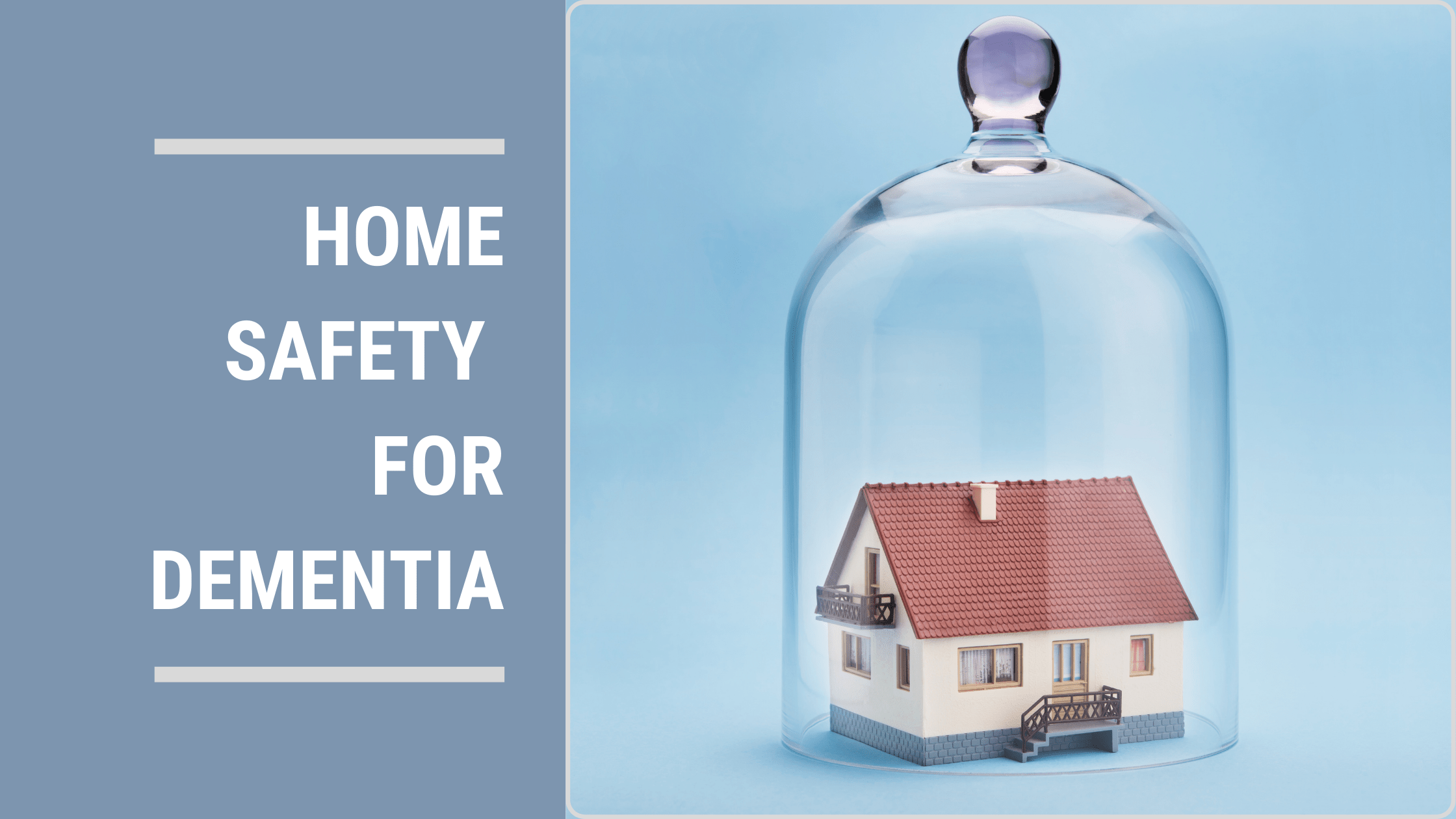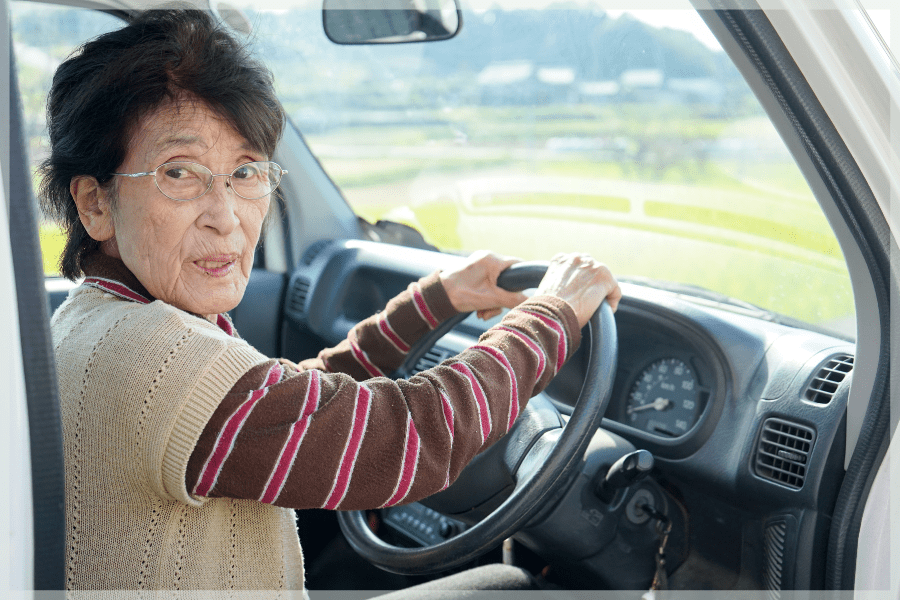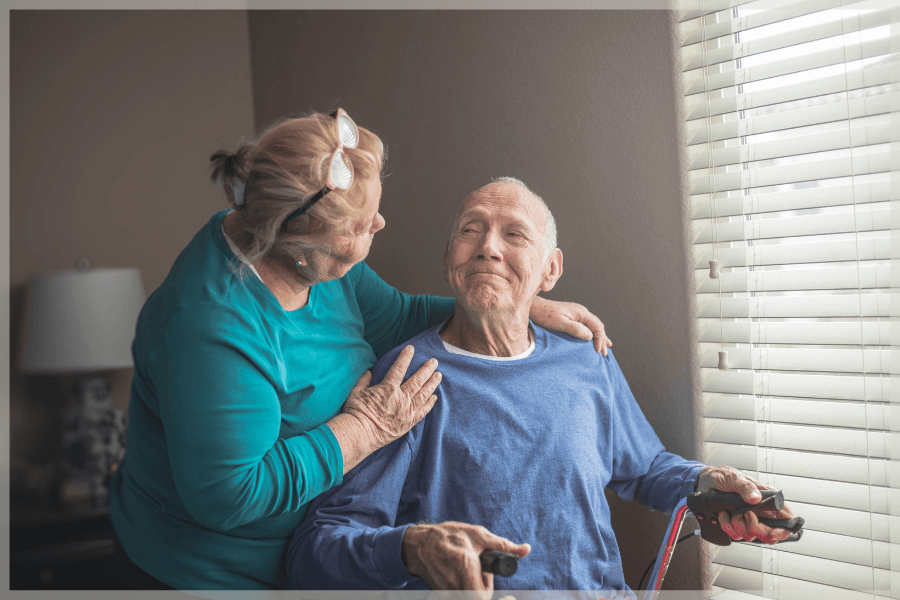
To keep your loved one safe and give yourself some peace of mind, check out these recommendations to improve home safety for dementia patients.
Updated August 10, 2022
How To Improve Home Safety For Dementia Patients
As a family caregiver, you’ve probably combed dozens of checklists for home safety for dementia patients. You’ve added and removed everything from handrails to loose rugs to non-slip mats to ensure your loved one’s comfort and safety as they age in place.
But family caregivers caring for a loved one with dementia or Alzheimer’s also have other concerns. Elopement and wandering are among the most common, but there are other issues to prepare for. For this reason, you must regularly assess your loved one’s home if they have a cognitive disease.
To keep your loved one safe and give yourself some peace of mind, check out these recommendations to improve home safety for dementia patients.
Assessing Home Safety For Dementia Patients
Home safety for dementia patients can help address concerns brought on by the mental and physical changes that pose a detriment to your loved one’s health and safety, such as:
- Judgment, such as forgetting how to use everyday objects and appliances.
- Sense of time and place, including getting lost in their neighborhood.
- Behavior, such as confusion, fear, or suspicion.
- Physical capabilities, such as balance problems.
- Sensory changes such as vision, hearing, depth perception, etc.
So before you go through your loved one’s home, consider their health, abilities, and behaviors. For example, do they struggle to use stairs? Do they wander or move about the house at night? Do they have a history of falling?
Once you consider these questions, examine each room for possible risks and record any home modifications you think would be beneficial. Remember that your loved one’s surroundings are easier to modify than their behavior. As your loved one’s condition progresses, you must regularly reassess their capabilities.
Talking To Your Loved One About Driving

Driving is an important aspect of home safety for dementia patients. It’s not uncommon for seniors with dementia to keep driving after a diagnosis. If your loved one continues to do so, make sure you continuously assess their judgment, safety, and driving abilities. Discuss your concerns with their doctor and look for online resources to help you talk to your parents about giving up driving.
Keep in mind that your loved one might feel that giving up the keys threatens their independence. They may be afraid of becoming isolated, so think of several options you can propose before you talk.
Similarly, you should assess your loved one’s ability to safely use bikes, golf carts, tractors, lawnmowers, and other vehicles. If they can no longer drive, they might try to get around with another form of transportation. If you feel they pose a danger to themselves or others, find a way to prevent access.
Home Safety For Dementia Patients To Avoid Wandering And Elopement
Home safety for dementia patients is often necessary to avoid wandering and elopement. Older adults with a cognitive disease such as dementia may wander from their homes and become lost, a behavior known as elopement. While elopement may be intentional, that’s not always the case. Regardless, this behavior is highly problematic for caregivers and families. The following tips can keep your loved one secure and reduce the likelihood of an incident.
Install Alarms And Locks
Alarms and locks to improve home safety for dementia patients have come a long way, so consider investing in devices that notify you when your loved one is up and around before they leave the house, such as:
- Audio and video monitoring systems
- Floor mat or seat pad alarms
- Door alarms
- Door locks that are hard to open (but easy enough to use in an emergency)
You can program digital door locks to allow only specified people to enter your loved one’s home within a set timeframe. Only give the code to those you trust if you invest in these devices.
Ensure Easy Identification
This recommendation is more of a general tip than a suggestion about home safety for dementia patients. Make sure your loved one carries several forms of ID, emergency contact information, and verification of their diagnosis in their wallet and clothing. If they remove a piece of clothing or lose their wallet, they still have something on them. A medical bracelet or pendant is also a good idea, as it is more difficult to lose.
Use GPS Tracking
If your loved one has a smartphone, set up GPS tracking and make sure you can access it. This technology will make it easier to find them if they leave their house or monitor them if they travel alone.
But suppose your loved one doesn’t have a phone. In that case, you can purchase a personal emergency response system (PERS) or another emergency medical alert with built-in GPS capabilities. They can wear these devices on clothing, attached to keys, kept in the car, or placed anywhere else. Make sure the GPS functions without WiFi so you can monitor your loved one no matter where they may be.
General Home Safety For Dementia Patients
In general, pale, light-reflecting colors that contrast with the floor are easier for people with dementia to process. However, complex patterns and bright colors can be hard to decipher and overwhelm your loved one.
While home safety for dementia patients is a priority, you should also keep your loved one’s comfort in mind. Try to find a middle ground so their home still feels like home.
Laundry Room
If your loved one has a laundry room or similar space, make sure you:
- Install locks or childproof latches on drawers and cabinets where you store cleaning products, detergents, and other supplies.
- Keep your loved one from using the washer and dryer by shutting the doors and taking off large dials.
You may need to keep the laundry room locked if possible.

Kitchen
Besides the bathroom, the kitchen is also full of potential hazards. So when you assess the kitchen, consider these home safety tips for patients with dementia:
- Limit your loved one’s access to potentially hazardous appliances with things such as stove safety knobs or eliminating the garbage disposal.
- Remove artificial decorative food items, such as fruit baskets or magnets, to avoid consumption.
- Install childproof locks on cabinets and draws to keep your loved one from accessing cleaning products, fire starters, knives, scissors, and other potentially dangerous items.
- Post emergency contact numbers for family and medical personnel on the fridge or other clearly marked places.
- If your loved one has an answering machine, turn ringers on low and program it to turn on after the least number of rings.
Bathrooms
Bathrooms pose one of the most significant risks to seniors. Slippery floors, hard surfaces, bathtubs, and more are all problematic. However, you can make this room safer and more accessible for your loved one to use by:
- Installing shower chairs and grab bars close to the toilet, tub, and shower.
- Placing non-slip mats in front of the sink, toilet, tub, and shower (including inside the tub and shower).
- Covering the faucet with a foam or rubber cover to avoid injury of your loved one falls while bathing.
- Adding childproof locks on cabinets and drawers to restrict access to certain items such as electrical appliances or medication.
- Lowering the temperature on your water heater to prevent burns (120F or lower).
- Removing door locks keeps your loved one from unintentionally locking themself in the bathroom.
Living Room
Your loved one may spend most of their time in the living room. While you want them to feel comfortable in their surroundings, it’s also important to address things that could cause an accident, including:
- Eliminating clutter such as old newspapers and periodicals
- Arranging furniture to create clear walkways
- Moving cords and getting rid of loose rugs
- Limiting access to plastic bags and decorative items
- Replacing large houseplants that could be dangerous if consumed
- Placing sticks on glass doors and windows
- Making sure the room is well-lit
Lastly, if your loved one has a fireplace, remove anything they could use to start a fire. Never leave an older adult with dementia alone if there is an open fire.
Bedrooms
A few ways to make your loved one’s bedroom safer include:
- Use baby monitors or other monitoring systems that alert you if your loved one requires assistance. This is especially beneficial for those with advanced dementia.
- Avoid space heaters, which can be a fire hazard. If your loved one needs an electric blanket or heating pad, watch the temperature.
- Add night lights if necessary, especially in the hallway. If your loved one often wakes up during the night to use the restroom or get a drink, encourage them to do so before bedtime.
- Remove full-length mirrors, as people with dementia may not recognize their reflection from reality, which could cause fear or confusion.
Outdoors
Assess any exits, fences, gates, steps, and walkways outside your loved one’s home that could increase the risk of falling, wandering, or other accidents. There are many ways to improve safety in these areas, such as:
- Put stickers or brightly colored tape on glass panes since older adults with dementia or visual impairments could run into glass doors.
- Install fencing and locks around the yard, including separate gates around the swimming pool.
- Make sure walkways and steps are well-lit, even, and safe to use during rain, snow, or ice.
- Check for fire hazards, including locking the grill cover and removing access to gas tanks, gasoline, and fire starters.
- Remove ladders or other tools in the garage or shed that could harm your loved one in an accident.
Resources About Home Safety For Dementia Patients

NIA Alzheimer's and related Dementias Education and Referral (ADEAR) Center
The NIA ADEAR Center offers a vast library of free information about Alzheimer’s and dementia for families, caregivers, and health professionals. You can contact the ADEAR Center by calling 800-438-4380 or emailing adear@nia.nih.gov.
Alzheimers.gov
The federal government provides resources and information about cognitive diseases like dementia through its online portal. You may be able to find several community-based or financial help for home safety for dementia patients.
Family Caregiver Alliance
A support member from the Family Caregiver Alliance can connect you to additional resources for home safety for dementia patients. Call 800-445-8106 or email info@caregiver.org.
Eldercare Locator
The Eldercare Locator is another resource from the federal government. Call 800-677-1116 or email eldercarelocator@n4a.org.
MeetCaregivers Can Help
Dementia affects everybody differently, and your loved one’s needs and abilities can change over time. For this reason, you should regularly assess your loved one’s home safety — both in and out of the house — to guarantee their security, safety, and comfort.
If your loved one with dementia requires specialized care, MeetCaregivers can help. Call us at 1-888-541-1136 to ask about home safety assessments or Find A Caregiver today.
For more resources for caregivers and seniors, visit the Blog.
- AARP. “Caregivers Creating a Safe Home for Those with Dementia.” AARP, 1 Dec. 2017, www.aarp.org/caregiving/home-care/info-2017/dementia-home-safety.html.
- Goyer, Amy. “Home Safety Tips and Tactics for Dementia Caregivers.” AARP, 6 Feb. 2017, www.aarp.org/caregiving/home-care/info-2017/wandering-dementia-concerns-ag.html.
- “Home Safety.” Alzheimer’s Disease and Dementia, www.alz.org/help-support/caregiving/safety/home-safety.
- Mayo Clinic Staff. “Essential Home Safety Tips for Alzheimer’s Caregivers.” Mayo Clinic, Mayo Foundation for Medical Education and Research, 25 Aug. 2020, www.mayoclinic.org/healthy-lifestyle/caregivers/in-depth/home-safety-tips/art-20046785.
- NIH National Institute on Aging. (n.d.). Home Safety Checklist for Alzheimer’s Disease. NIA.NIH.gov. Retrieved August 10, 2022, from https://www.nia.nih.gov/health/home-safety-checklist-alzheimers-disease. Content reviewed: May 18, 2017.
